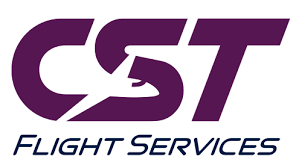by Rick Gardner, Director of Aviation Services at CST Flight Services
For those of you who are veteran fliers to Mexico, you will recall that for over 20 years Mexico had a Single Entry Permit and a Multiple Entry Permit authorizing private aircraft to enter Mexico and fly within the country. On January 01, 2024, this all changed and a new entry process was implemented.

For well over 20 years, Article 29 of Mexico’s Civil Aviation law decreed that foreign (non-Mexican) aircraft could enter Mexico by landing at an official international Airport Of Entry (AOE) in Mexico and obtaining a Single Entry Authorization (subsequently called the single entry permit) or a Multiple Entry Authorization (subsequently called the multiple entry permit).
In 2014, a Mandatory Circular (CO SA 02/14 R1) was generated that updated the procedures and documents required for authorizing the issuance of these permits. This circular was a heavy-handed intent to address illegal charters and illegal cabotage in Mexico which caused great confusion because it inserted new procedures and it eliminated an essential federal document that was relied upon by not only Mexican Civil Aviation officials but also by Mexican Immigration and by Mexican Customs.
The fallout of this new procedure resulted in several Mexican AOE’s being unable to receive international flights for many months while the issues were resolved, but eventually work-arounds were found and things settled. Although tweaked periodically, Article 29 of Mexico’s Civil Aviation Law remained unchanged until May 05, 2023 when the entire Civil Aviation Law received a major update in many areas. Amongst the many changes made in the new version of the Law, the concept of “single entry” and “multiple entry” authorizations were eliminated and the ambiguous phrase “corresponding authorization” was inserted.
On December 27, 2023, 4 days before the end of the year, an internal AFAC document (Oficio 4.1.2.4197) was published to all of the Civil Aviation offices at Mexico’s AOEs informing them that a new procedure was being issued for the authorization of private aircraft entering Mexico. This internal document specified the following:
- This internal AFAC document has a validity of 180 days. Implicitly, we should expect a new set of procedures for the entry process to be published sometime in June, 2024.
- The changes to how entry authorizations were to be handled would go into effect January 01, 2024
- It clarified that the reference to a Single Entry Permit and a Multiple Entry Permit were contrary to law and that the concept of a “Single Entry Authorization” (Autorización de Internación Única – AIU) was being adopted.
- That the AIU would be valid for 180 days from the date of issuance
- That during the 180 day period, aircraft could freely travel in Mexican territory. (Similar to the prior Multiple Entry Permit, but now for 180 days from the time the AIU is issued)
- That to issue an AIU the foreign operator needed to present their request for an AIU at least 2 days before their planned arrival in Mexico.
- That the Civil Aviation officials at the AOE could no longer unilaterally process an entry authorization but rather needed to request an AIU authorization number from Civil Aviation headquarters in Mexico City before the AIU could be issued.
The request for the AIU number must be sent via email to a central email address and accompanied by:
- Make of aircraft
- Model of aircraft
- Registration (Tail) number
- Number of crew
- Number of passengers
- Name of Civil Aviation Inspector in charge of the AIU request
- Name of Civil Aviation Comandante (or acting representative) who approved the AIU request
- The request needed to be emailed to a central email address in Mexico City
- As a measure of added security and due to different legal “issues,” a Layout Of Passenger Accommodations (LOPA) needed to be presented in addition to the documents listed above.
- That for additional guidance on how the authorizations should be issued, AFAC officials needed to refer to the confusing 2014 Mandatory Circular (which was created for Entry Permits, which are now prohibited) until a new Circular could be published.
Confused? You are not alone.
Almost immediately, we saw a divergence in how each of these scenarios was being address and how the new procedures were being implemented across the many Mexican AOE’s. Amongst the most notable issues we have seen are:
- It has been clarified that aircraft that were already in Mexico under the old Single Entry Permit that was issued in 2023 could remain in Mexico but needed to depart before those permits expired.
- The time to obtain an AIU authorization number is averaging around 2 hours.
- Aircraft that had been issued an AIU and reentered Mexico with different crew (and sometimes different passengers) are being required to process a new AIU.
- Some airports are requiring that in addition to a LOPA, pictures of the inside of aircraft and sometimes the outside of the aircraft as well be provided to obtain an AIU.
One bright side of this new procedure is that it resolves an issue that had plagued the old Multiple Entry Permit, which expired on December 31st. Aircraft operators who entered Mexico with a Multiple Entry Permit who had an AOG at the end of December or who wanted to spend New Years in Mexico could face severe fines if they did not remove their aircraft from Mexico before their permit expired at midnight on December 31st. With the new AIU, you always have a 180-day window for its use with multiple entries starting on the date of issuance.
There is still some confusion, frustration and miscommunication at all levels within the AFAC but things are settling down. However, per the notice received at the end of last year, we should expect a new circular at the end of June which may put all the balls back into the air.

In the meantime, expect some turbulence ahead, have pictures and LOPA’s ready and expect to have to request new AIU’s if you change crew (and possibly passengers). The good news is that the beaches are still nice, the food is still delicious, the people are still friendly and the beer is still cold.
CST Flight Services is a CJP Patron Partner. Visit www.cstflightservices for more information.